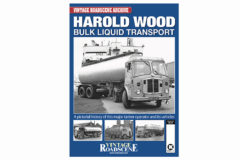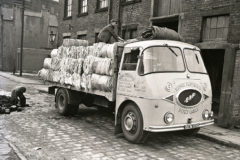The last years of Leyland
Posted by Chris Graham on 10th June 2020
Peter Davies takes a fascinating look back at the final years of Leyland Trucks, from the 1960s to the company’s takeover by DAF in 1987.
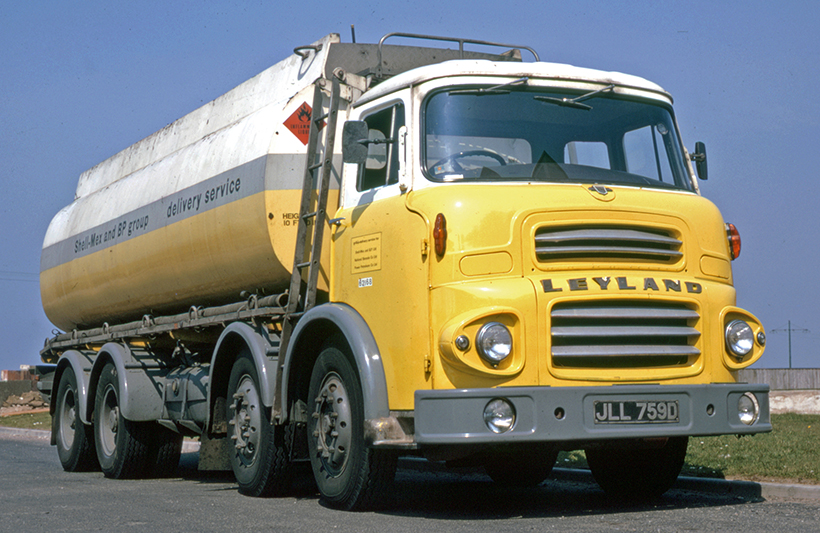
The last years of Leyland: Representing Leyland’s 1960s range is this classic, LAD ‘Vista-Vue’ Octopus 24LWO.R tanker of Shell Mex & BP, dating from 1966.
Leyland Motors entered the 1960s with a comprehensive truck range, most models having the new LAD (Leyland Albion Dodge) ‘Vista-Vue’ cab. They were generally marketed as the ‘Power-Plus’ models. The use of ‘zoo’ names continued, with models such as the Badger, Beaver, Hippo and Octopus. The Retriever name was chosen for a low-weight, six-wheeler which was lighter than the Hippo.
Likewise a ‘Low-weight’ Octopus was introduced, since the standard Octopus was heavily built, making it less competitive on payload. The Badger tractor unit was a lighter alternative to the Beaver. Much later, around 1969, Leyland added the Bear 6×4 for mixer and tipper use. Alongside these models, the Comet and Super Comet carried on. Leyland’s export business was still important, and the company continued to market certain export-only types.
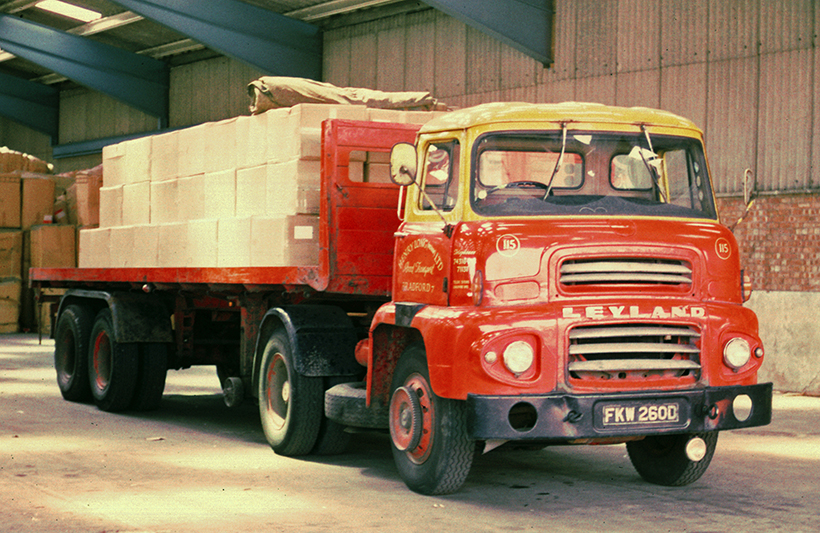
The LAD ‘Comet’ artic and its heavier ‘Super Comet’ counterpart seen here, were designed for 18- and 20-tons GCW, respectively.
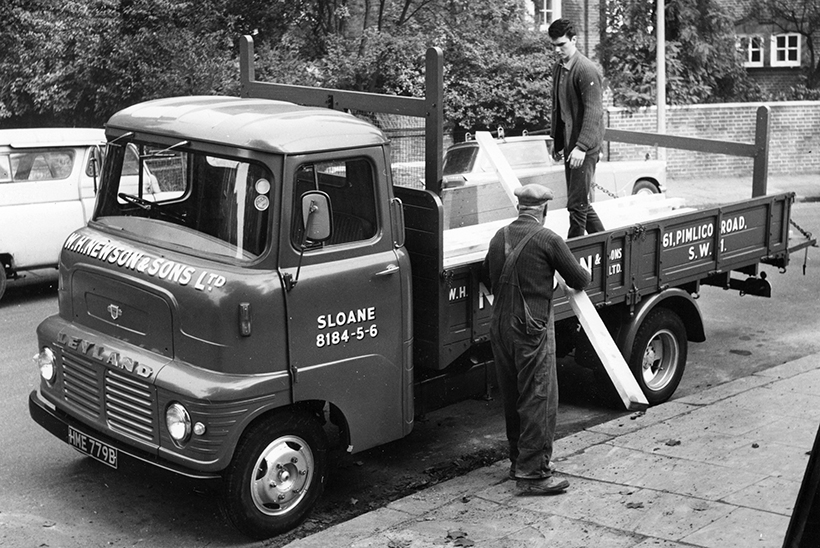
In 1961, Leyland bought-out Standard Triumph and gained a facility to build a lighter truck, namely this Leyland ‘90’ for a two-ton payload.
Ergomatic models launched
The big news for 1964 was the launch of the new Ergomatic ‘Freightline’ range. The Michelotti-designed tilt cab gave Leyland’s image a new boost, while versions of the cab also went on other Leyland Group models, from AEC and Albion. It was possible to order a fixed cab version for certain applications and, for export customers, there was also a sleeper version.
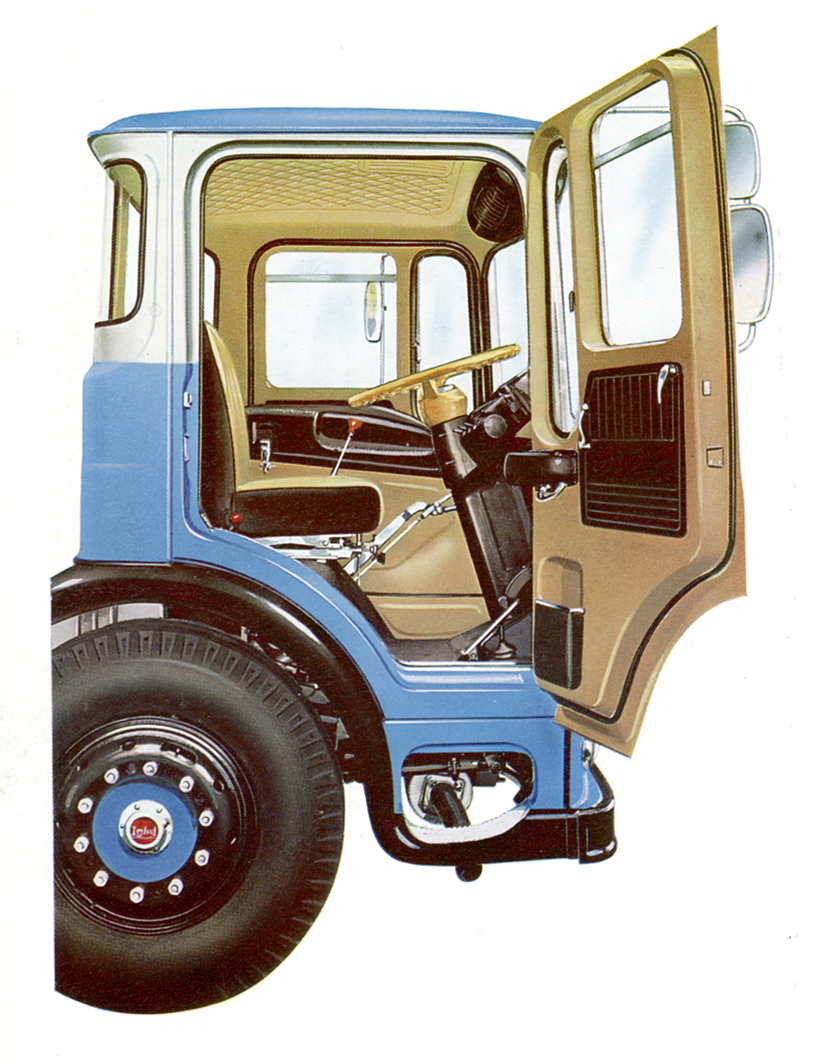
The big news for 1964 was the launch of the new Freightline range, with the Ergomatic tilt cab designed by Michelotti.
The Freightline launch coincided with the raising of UK legal gross weights, so the range included a newly-engineered, 32-ton Beaver tractor, available with a semi-automatic gearbox. The so-called ‘Two Pedal’ Beaver was big news, and was seen as the future for heavy trucks.
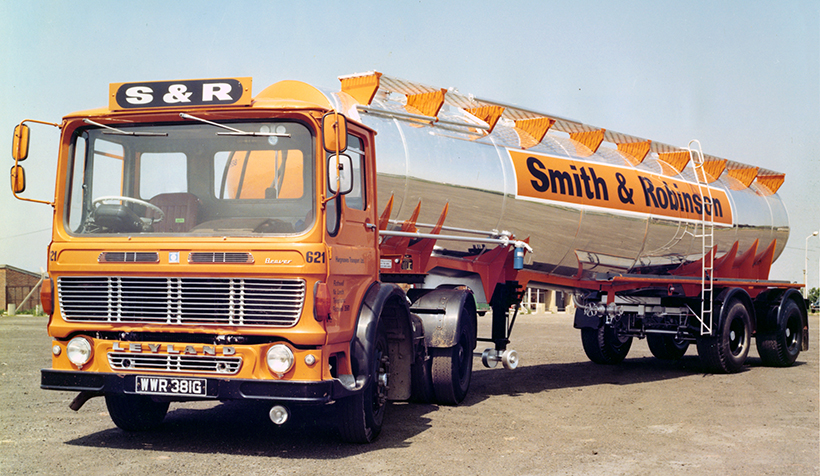
One notable model in the new Freightline range was the ‘Two Pedal’ Beaver, featuring a clutch-less, semi-automatic transmission.
As well as the Beaver, Leyland announced a three-axled derivative, named the ‘Steer’. By that time, the old ‘Steer’ Chinese-Six truck had long since been dropped, so the name was applied to the new 32-ton tractor, aimed mainly at operators with tandem semi-trailers. Between 1964 and 1972, maximum weight artics were limited to 13 metres in length, but the minimum legal outer axle spread (OAS) required a three-axle tractor unit, or a tri-axle trailer. Very few Steer tractors were built.
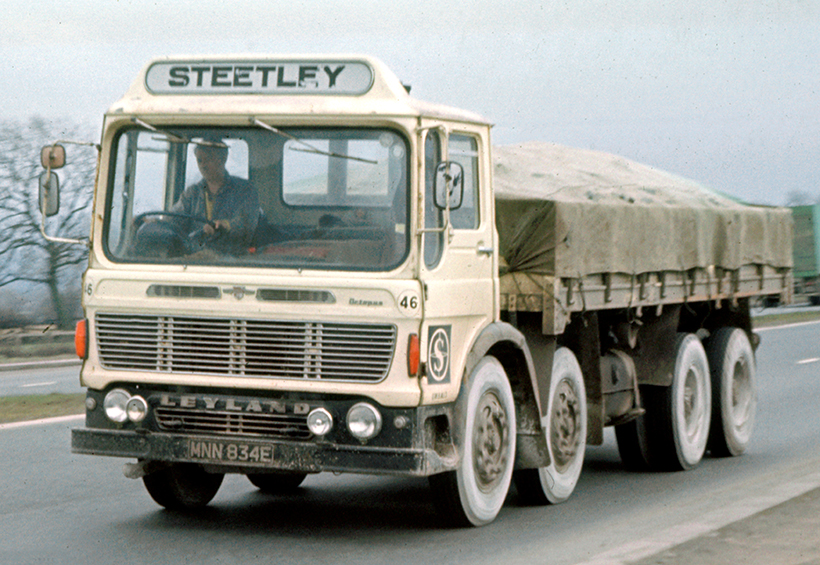
After UK artic weights went up to 32 tons in 1964, eight-wheeler sales slumped leading Leyland to suspend Octopus production between 1970 and 1975. This tipper dates from 1967.
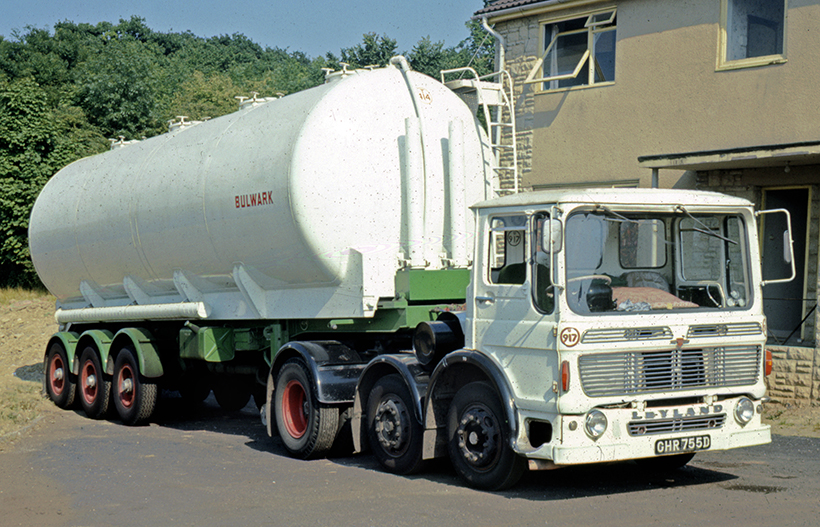
The Steer was a short-lived model – basically a Beaver with a second steering axle added.
In the late ’60s, after the acquisition of the Rover Company in 1966, Leyland built a small number of experimental, gas turbine trucks based on Rover’s extensive experience in that field. After a period of testing and field trials, the project was eventually abandoned.
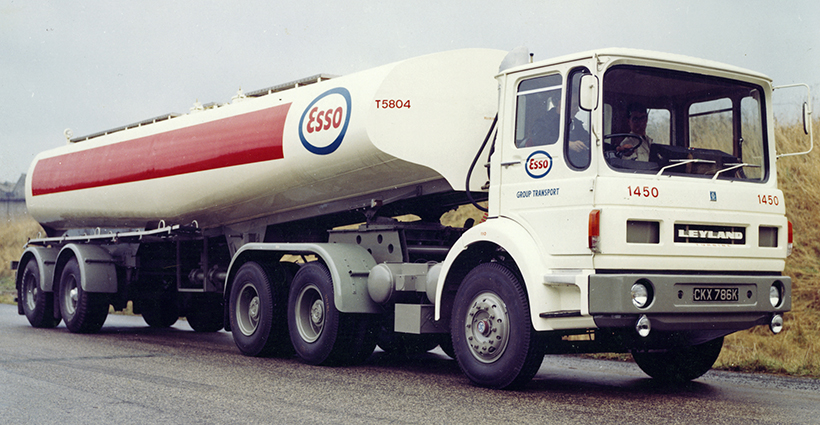
A unique design of front panel disguises this 1972 Ergomatic 6×4 tractor for Esso. It was one of a few experimental, gas-turbine Leylands – a project arising from the take-over of the Rover Car Company, in 1967.
During the ’60s, Leyland had several overseas plants building local variations on existing models, such as the Iranian Super Comet with its locally-designed cab. Others included the Dutch ‘Meteeor’, the Israeli Leyland Ashdod, the Indian Ashok Leyland and the South African Super Comet ‘Eland’.
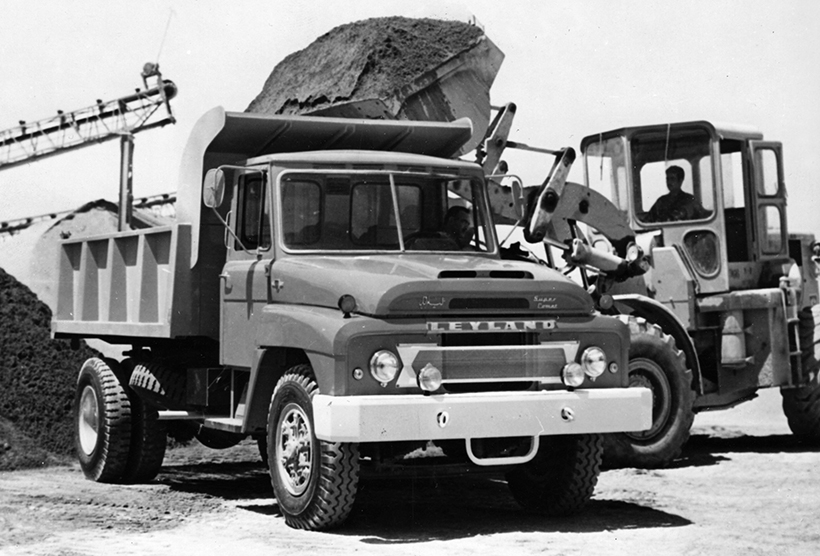
Leyland could boast a global presence in the 1960s, this Iranian-built Super Comet being typical of many overseas trucks to bear the name.
Up until the late ’60s, Leyland continued to be reasonably successful, and was easily the UK’s largest producer and exporter of heavy trucks. Under Donald Stokes’ leadership, the company set out to become not only the largest group in the UK, but was aiming to rival the largest corporations in the world.
Financial downturn
Sadly, Leyland’s fortunes were to take a downturn following an ill-planned merger with British Motor Holdings (BMH), which included BMC trucks and Guy Motors. BMC’s range, built at Bathgate, was later marketed as Leyland ‘Redline’. The outcome of the merger, under which the company was to become part of the British Leyland Motor Corporation (BLMC), was that BMH’s struggling car operations starved the truck divisions of resources and investment.

Spotting the difference between Redline and Blueline models was nigh-on impossible to the untrained eye. Redlines were inspired by Austin Morris, while Bluelines (a name not often used) were of Albion pedigree, like this Clydesdale of Christian Salvesen.
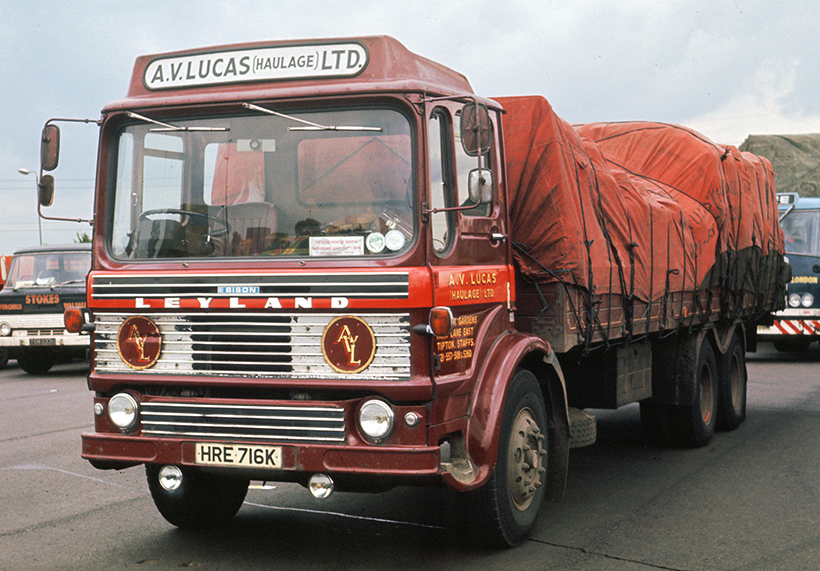
Leyland’s ‘Fixed Head’ 500 diesel went into a range of models, including this 1973 Bison 6×4 for a 24-ton GVW.
The various divisions under the BLMC umbrella were beginning to lose their individuality. The once proud Leyland name was appearing on cheaper, mass-produced vehicles such as BMC, and this did nothing for Leyland’s image. The troublesome ‘fixed-head’ 500 engine launched in 1968 and fitted to the Lynx, Bison and Buffalo (and later, to the Octopus), also tarnished Leyland’s image during the 1970s.
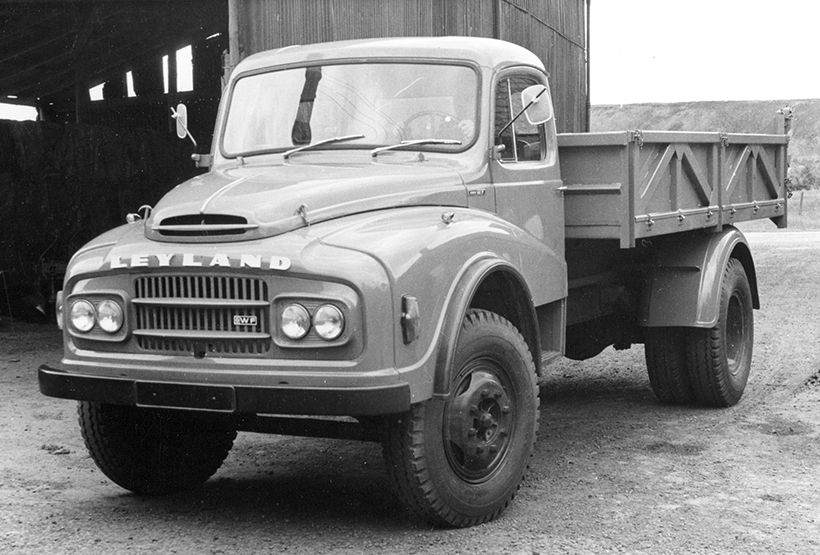
The appearance of the Leyland name badge on the likes of this export BMC ‘WF’ truck, did nothing for Leyland’s prestige image.
The situation worsened until 1975 when the UK government, concerned that the collapse of BLMC would have disastrous implications for Britain’s economy, was forced to step in and nationalise the whole group in an effort to rescue what remained viable. As part of that overhaul, the truck operations were separated from the car divisions, and were re-named Leyland Truck & Bus.

Leyland re-entered the rigid-eight market after a five-year gap between 1970 and 1975. This ‘510’-engined Octopus features the later, face-lifted Mk 2 Ergomatic cab.
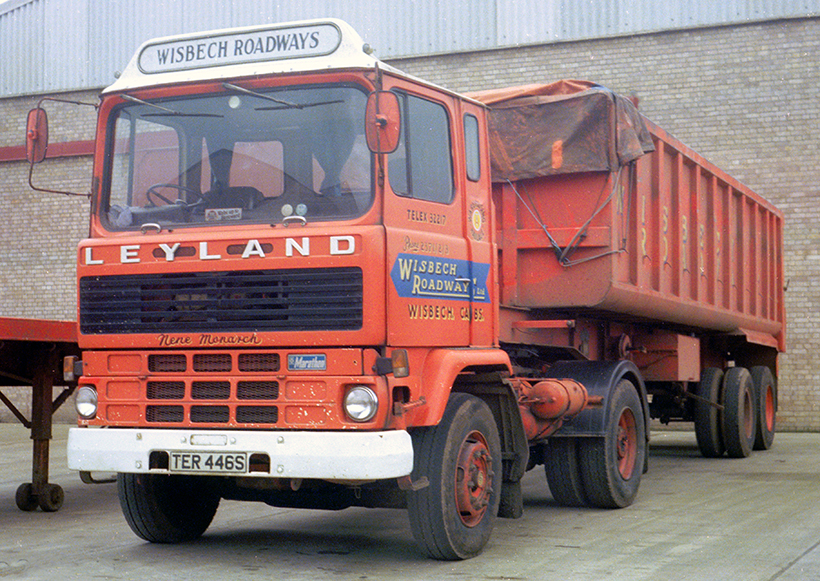
At a time when Leyland was cash-strapped, it came up with the AEC-inspired Marathon, featuring an adaptation of the Ergomatic cab and powered by the TL12 Turbo diesel based on the AEC AV690.
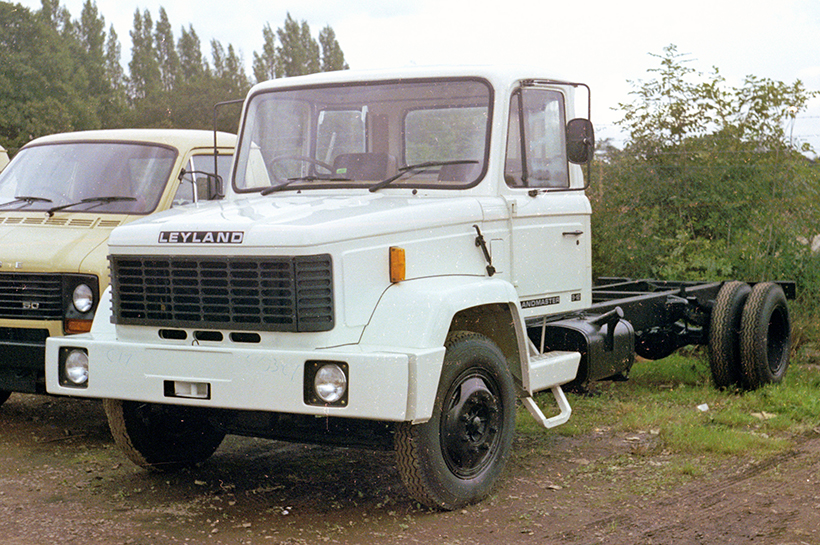
Over the years, Leyland built a variety of medium-weight, bonneted overseas models, and the last such machine was the Landmaster, introduced in the late 1970s. It replaced the Leyland WF, which was an Austin-Morris design. This ‘Third World’ truck features an adaptation of the G cab.
A new range
Funds were then ploughed into a new range of trucks which was desperately needed since Leyland had been starved of resources during the BLMC era. That new range would take over from the confusing conglomeration of different brands.
It was the T45 which was launched in 1980. Key models were the Roadtrain, Roadrunner, Freighter, Cruiser and Constructor. By that time, the axe had fallen on most of the other Leyland Group factories, including AEC at Southall, Guy at Wolverhampton and BMC at Bathgate.
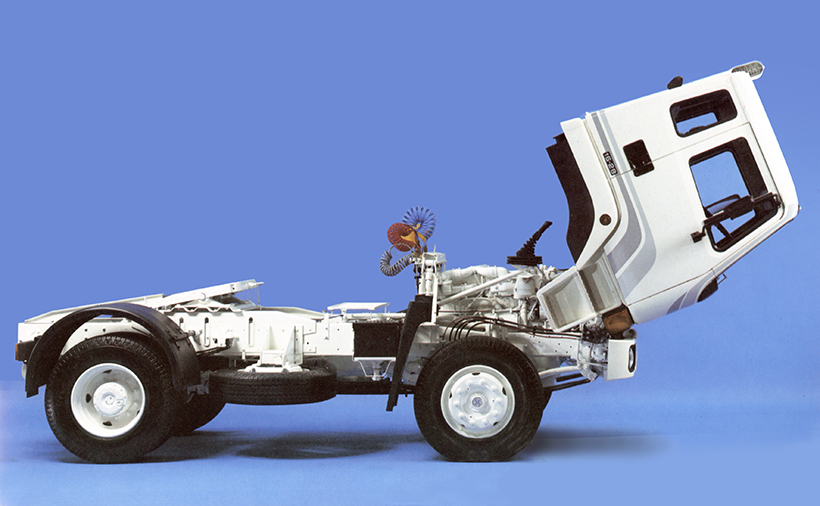
Leyland’s most important new range for years was the T45, launched in 1980. This image of a Roadtrain tractor demonstrates the tilt cab.
Despite the initial success of the T45, Leyland suffered further losses and, in 1987, the decision was taken by the UK government to sell the company. The winning bid came from DAF Trucks. Ironically, the relatively young Dutch company had built its reputation largely on Leyland engine technology during the ‘50s. Henceforth, Leylands were to be marketed as Leyland-DAF in the UK.
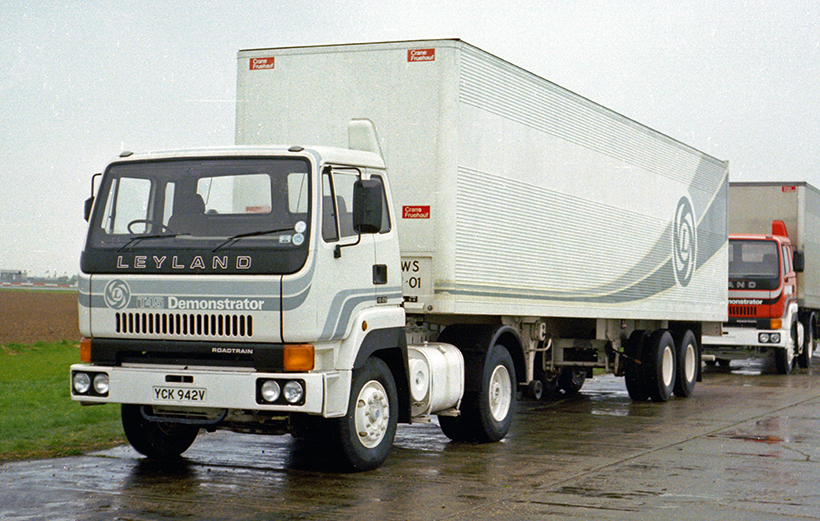
The C40 cab that appeared on the new Roadtrain and its contemporaries was design by the Ogle Design Group. This is one of Leyland’s early demonstrators.
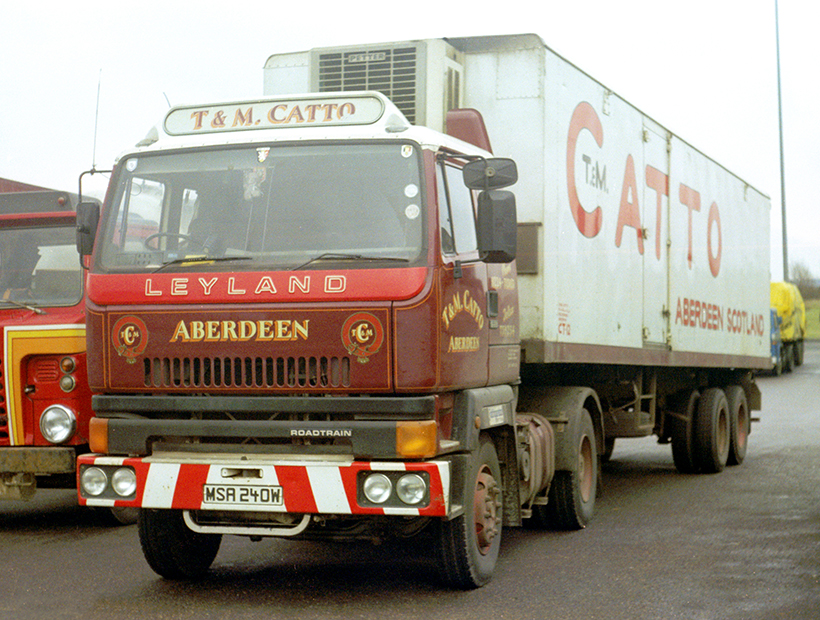
A high-datum, full-width C40 cab was soon to become available on the heavier T45 models. This excellent example wears the smart T&M Catto livery, and dates from 1980.
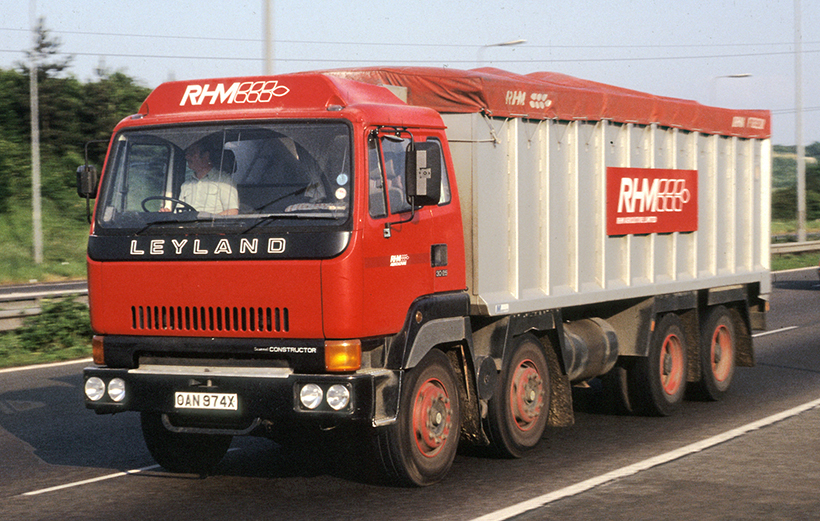
With the arrival of the T45 range the name ‘Octopus’ was dropped in favour of ‘Constructor’, reflecting the fact that development work was done by Scammell.
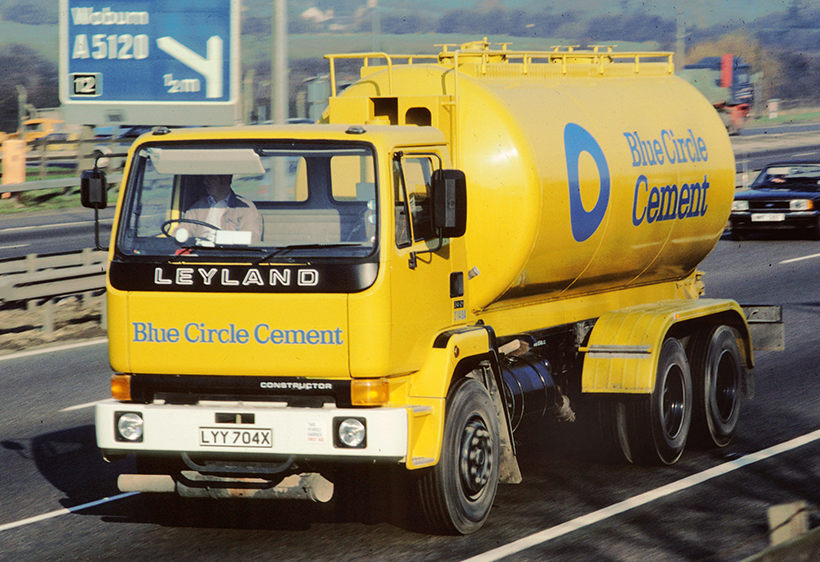
As well as the rigid-eight Constructor, Leyland offered this 6×4 version with narrow cab. Narrow-cabbed 8-wheelers followed later.

Representing the Roadtrain at its best is this stylish high-roof ‘Interstate’ 6×2 tractor unit, powered by a Perkins (nee RR) Eagle 350LE, exhibited at the 1986 NEC Motor Show.
Leyland-DAF merger
The Leyland-DAF story begins in 1987 when Leyland, once the UK’s most prestigious truck manufacturer, was sold into foreign ownership, perhaps symbolising the general decline of Britain’s once thriving truck industry. A combination of flawed government policies and adverse market forces, led to Leyland’s near collapse.
As explained, it was the 1968 link-up with BMH, to form the British Leyland Motor Corporation (BLMC), that eventually led to Leyland’s downfall. In spite of drastic slimming measures, and the launch of a first-class product in the T45, the company continued to suffer heavy losses. It was now called ‘BL’, perhaps to disguise the ‘British’ identity which was thought to convey a poor image, and relegated to being a member of the Rover Group.
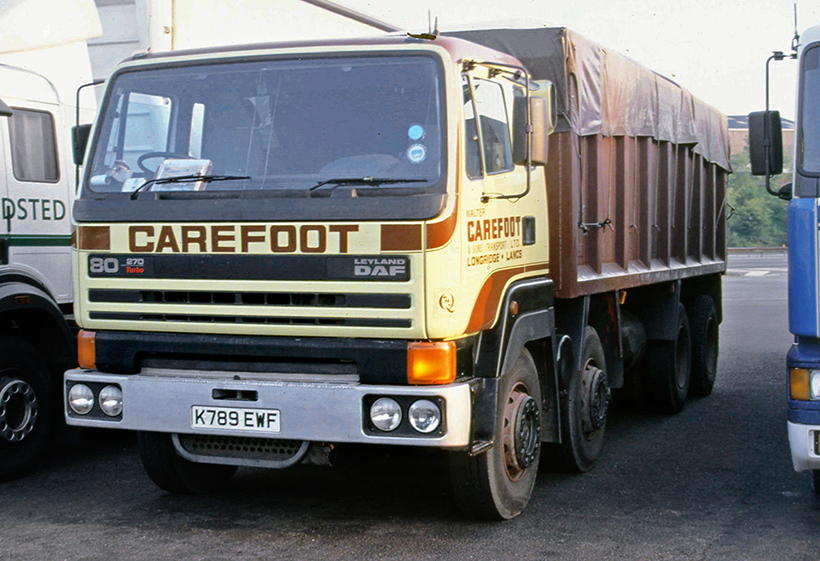
Once DAF had taken over the reins, the C40 cab was face-lifted to incorporate black stripes, and the Constructor became the Leyland-DAF 80 Series, powered by DAF’s 11.6-litre diesel.
By 1986, the taxpayers could no longer be expected to prop up the state-owned truck maker, and a buyer was sought. Bids were turned down from General Motors and Paccar but, in 1987, it was agreed that DAF would take a 60% controlling share in Leyland and Freight Rover.
Leyland was to concentrate more on light and medium trucks, while DAF concentrated on heavy trucks. A new, UK-based sales company would market the products as Leyland-DAF in the UK while, in other markets, the trucks were to be badged as ‘DAF’.
Initially, the new organisation appeared to flourish, and could even boast becoming UK market leader, but then DAF ran into financial problems following heavy investment in a new range, the 65, 75 and 85 series. In February 1993, the company collapsed and was rescued by the Dutch and Belgian governments. However, the UK assembly plant at Leyland was not part of the deal, and was the subject of a management buy-out, returning it to 100% British ownership.
The new company, under the name Leyland Truck Manufacturing, formed an agreement to build trucks for DAF to be marketed in the UK through Leyland-DAF. In 1996 Paccar took over DAF and, two years later, it acquired Leyland Truck Manufacturing. From 2000, the Leyland name was finally deleted from Leyland-DAF. The Leyland plant is still turning out a range of DAF trucks today, but the famous Leyland brand is no more.
To subscribe to any of Kelsey Publishing’s transport-related magazines, simply click here



